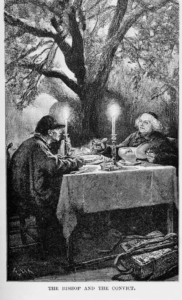The Pew Research Center released a new survey that included the following findings:
Level of Dissatisfaction
- Just 26 percent are satisfied with national conditions, while 71 percent are dissatisfied.
- Forty-nine percent say they think 2015 will be a better year than 2014, while 42 percent think it will be worse. The current ratings are more pessimistic than in recent years, as the public generally takes an optimistic view of the year to come.
Top Concerns
- A third (34 percent) cite an economic issue as the top national problem. (Compared to the start of the year, however, just half as many specifically cite unemployment or joblessness as the top national problem: 20 percent then vs. 10 percent now.) The share expressing dissatisfaction with government or the president, or who cite partisan gridlock or the divisions in the country has increased from 13 percent last January to 18 percent currently. Just 9 percent say foreign or international issues are the country’s top problem, unchanged from January.
Political Polarization
- More than eight out of 10 Americans surveyed (81 percent) say the country is more politically divided these days than in the past. While that is little changed from two years ago, it is as high a percentage expressing this view as at any point over the past decade.
- Just 17 percent think the country will be less politically divided five years from now. More than three-quarters (78 percent) say either the country will be about as divided as it is today (41 percent), or more politically divided (36 percent).
- The public’s expectations for cooperation between leaders in Washington are highly partisan. Fully 66 percent of Democrats think President Obama will cooperate at least a fair amount with Republican leaders in Congress over the next two years, compared with just 19 percent of Republicans who say this.
- Fully 71 percent say a failure of Republicans and Democrats to work together over the next two years would hurt the nation “a lot” and 16 percent say it will hurt “some.” Yet 66 percent of Republicans and Republican-leaning independentswant their leaders to stand up to Obama on issues, even if less gets done, rather than work with him.
Unhappiness with the President
- Forty-two percent say they approve of the way Barack Obama is handling his job as president, while 51 percent disapprove. These ratings are little changed over the past year. Nearly nine in ten Republicans (89 percent) disapprove of Obama’s performance, while views among independents are also more negative than positive (55 percent vs. 39 percent approve). Mr. Obama continues to receive positive ratings from a majority of Democrats (72 percent approve vs. 19 percent disapprove).
Unhappiness with Congress
- Just 22 percent express a favorable opinion of Congress while 71 have an unfavorable one. Positive views of Congress have remained below 30 percent for more than three years. The current ratings rival the lowest on record (in July 2013), when 21 percent had a favorable opinion while 70 percent an unfavorable one.
- The favorable ratings for congressional leaders of both parties (John Boehner, Mitch McConnell, Nancy Pelosi and Harry Reid) are all in the 20s, ranging from a low of 20 percent (Reid) to a high of 27 percent (Pelosi).
Unhappiness with the GOP and the Democratic Party
- There is no sign of a honeymoon for the Republican Party following its midterm victories: Just 37 percent view the GOP favorably while 57 percent view it unfavorably, little changed over the past year.
- What has changed is the Democratic Party’s favorable ratings, which are now nearly as low as the GOP’s. Just 41 percent have a favorable impression of the Democratic Party while 54 percent have an unfavorable opinion. That is among the most negative measures of favorability for the Democrats in more than two decades of polling.
- Today independents’ views of the two parties are about the same. About a third have favorable impressions of either the Republican Party (32 percent) or the Democratic Party (33 percent); in October, more independents viewed the Democratic Party (41 percent) positively than the Republican Party (33 percent).
The mood of the country, then, is unhappy and unsettled. Americans are deeply dissatisfied with the conditions of the nation (especially economically) and unusually pessimistic about the future. The level of political polarization troubles them, even as massive distrust exists between Republicans and Democrats. And there’s across-the-board discontent with our political institutions–the two national parties, Congress, and the president. The Democratic Party has clearly suffered more than the GOP this year, based both on public approval and, especially, based on the outcome of the 2014 midterm elections. But the Republican Party is still -20 in the favorable-unfavorable ratings.
We are in the midst of a prolonged period of alienation between the American people and those who govern them. That isn’t good for a republic, where some degree of trust between the citizenry and its elected leaders is necessary in order to address urgent national problems.
One of the most daunting tasks facing those who run for president in 2016 will be to convince Americans that they understand the scope and dimensions of what’s happening, that they’re genuinely troubled by it, and that they have the skills–temperamentally, philosophically, and politically–to begin to repair the breach and put us on the right path. It is quite a formidable task, yes; but it’s also quite a vital one, too. It’s at moments like this when exceptional leaders need to step up.
— Peter Wehner is a senior fellow at the Ethics and Public Policy Center


